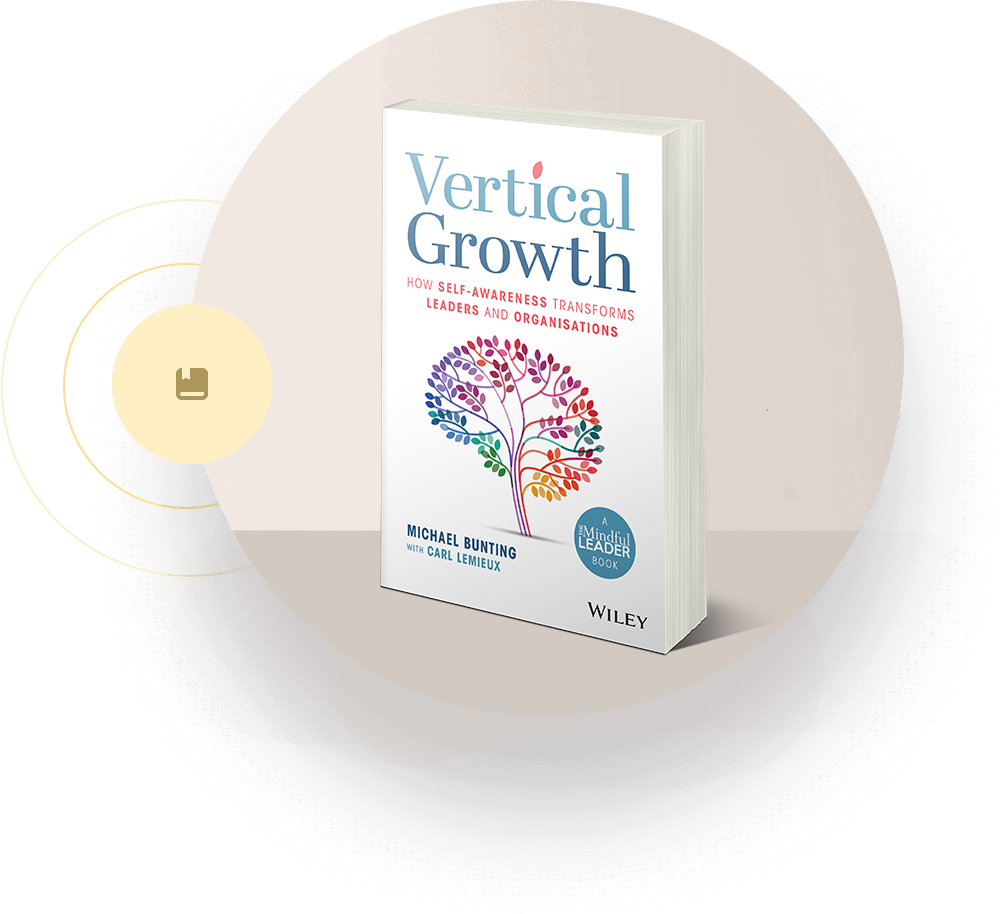5 Ways to Enhance Your Leadership Coaching Style With an Accredited Coaching Program
Great coaching is both an art and a science. Accredited coaches in the field of leadership play a pivotal role in helping individuals and teams achieve their potential. However, becoming a truly effective leadership coach requires more than offering advice or facilitating discussions.
The best leadership coaches master the ability to guide clients toward meaningful self-discovery, behavioural change, and measurable growth.
As the landscape of leadership evolves, coaching methodologies must also adapt. Accredited coaching certification programs like the Leadership Growth Profile 360° Coaching Certification provide leadership coaches with evidence-based strategies to elevate their practice.
These tools are most impactful when integrated into a broader coaching philosophy rooted in self-awareness, empathy, and continuous learning. They also enable vertical development – supporting deeper mindset shifts that are increasingly recognised as the cutting edge of effective leadership coaching.
In this article, we explore five practical ways to become a better leadership coach, backed by the latest research and best practices. We’ll also show how coaching certification programs like the Leadership Growth Profile 360° Coaching Certification can greatly enhance your coaching outcomes.
Coaching for Vertical Growth
One of the most important – and often overlooked – aspects of effective leadership coaching is supporting vertical development. Unlike horizontal growth, which focuses on building new skills, vertical development expands a leader’s capacity to see, think, and lead in more adaptive and intentional ways.
The Leadership Growth Profile is designed to enable this deeper growth. It assesses leaders against TripleGoal’s proprietary Green Zone framework – seven core practices grounded in decades of research and built off the world’s most studied leadership model.
By surfacing unconscious Red Zone behaviours and guiding leaders toward more values-aligned action, the Leadership Growth Profile helps coaches move beyond behavioural change and into true mindset transformation.
1. Learn the Art of Transformational Questions
The best leadership coaches know that the right questions can unlock deep insights and drive meaningful change.
Transformational questions challenge clients to think critically about their behaviours, assumptions, and goals, empowering them to uncover solutions rather than relying on advice or direction.
How to Ask Transformational Questions:
- Challenge assumptions: Encourage clients to examine their current beliefs and explore alternative perspectives.
- Encourage reflection: Prompt clients to consider patterns in their behaviours and how these impact their leadership effectiveness.
- Focus on impact: Guide clients to connect their actions to outcomes, fostering greater accountability and understanding.
- Leverage data: Use insights from tools like the Leadership Growth Profile to ground your questions in measurable behaviours and tangible growth opportunities.
Improving Your Questioning Skills Through Our Accredited Coaching Training
Transformational questions inspire self-awareness, critical thinking, and accountability. The Leadership Growth Profile Coaching Certification Program enhances this process by providing a detailed analysis of a leader’s Green Zone strengths and Red Zone derailers.
This data allows coaches to focus their questioning on specific behaviours that are most relevant to the client’s growth. For example, a coach can explore how a client’s values-driven behaviours (Green Zone) contribute to team trust or investigate the triggers behind reactive tendencies (Red Zone).
Through the Leadership Growth Profile, certified coaches assess leaders across seven core Green Zone practices – including ‘Self-Regulation’, ‘200% Accountability’, ‘Empower Others’, and ‘Cultivate Curiosity’. These practices are part of a proprietary framework built on The Leadership Challenge, the world’s most researched leadership model.
By anchoring conversations in the structured framework of the Leadership Growth Profile, our accredited training program ensures that the questions you ask lead to behaviour-changing insights and measurable progress.
This combination of tailored inquiry and evidence-based feedback makes the coaching process more impactful and aligned with the client’s goals.
2. Help Clients Build Self-Awareness
Self-awareness is the cornerstone of effective leadership and personal growth.
A great leadership coach helps clients see themselves clearly, understand how others perceive them, and identify patterns in their behaviour.
Strategies for Building Self-Awareness:
- Use assessment tools: Frameworks like the Leadership Growth Profile offer objective data to highlight clients’ blind spots and strengths.
- Encourage reflection: Regularly ask clients to journal or reflect on their successes, challenges, and growth areas.
- Provide constructive feedback: Deliver feedback that is specific, actionable, and framed positively.
Developing Self-Awareness Through Our Executive Leadership Coaching Training
The Leadership Growth Profile 360° Coaching Program draws on the neuroscientific principles of the reactive “fast brain” and the reflective “slow brain”, aligning Green Zone and Red Zone behaviours with these concepts.
Our accredited coaches can subsequently help clients identify reactive behaviours (Red Zone) and work toward cultivating intentional, adaptive behaviours (Green Zone).
By using tools like the Leadership Growth Profile, certified coaches from our leadership coaching program can guide clients in translating insights into development plans that align with their leadership objectives.
3. Expand Your Capacity for Adaptive Coaching
Effective leadership coaches adapt their approach to meet the unique needs and challenges of each client.
Expanding your capacity for adaptive coaching involves honing the ability to flex your style, tools, and strategies based on the situation and the client’s developmental stage.
How to Improve Adaptive Coaching Skills:
- Develop situational awareness: Stay attuned to your client’s emotional state, goals, and external challenges, adjusting your approach accordingly.
- Strengthen your coaching toolkit: Continuously explore new methodologies, frameworks, and techniques to diversify your repertoire.
- Practise reflective learning: Regularly review your sessions to identify what worked, what didn’t, and where adjustments could improve outcomes.
- Use data-driven insights: Tools like the Leadership Growth Profile provide objective feedback on clients’ behavioural patterns, helping you target specific areas and adjust your coaching strategy for maximum impact.
Accredited Coach Training That Helps You Stay Adaptive
No two clients are the same, and the ability to pivot your approach ensures that you remain relevant and effective in every session.
As part of our accredited coaching certification program, you’ll develop the skills to not only increase your own versatility, but also deepen the trust and impact of your client relationships.
By leveraging structured frameworks like the Leadership Growth Profile, our executive coaching training allows you to deliver personalised guidance that meets clients where they are and helps them move forward with confidence.
4. Integrate Evidence-Based Tools and Frameworks
While personal insight and intuition are valuable, the best leadership coaches leverage evidence-based tools to deliver measurable outcomes.
Tools like the Leadership Growth Profile provide a structured approach to coaching, ensuring that conversations are grounded in data and aligned with best practices.
Benefits of Using Assessment Tools:
- Objective insights: Leveraging proven assessment frameworks such as the Leadership Growth Profile provides data-driven feedback that complements anecdotal observations.
- Structured development plans: Coaches can use frameworks like the Growth Matrix to guide clients in setting and achieving goals.
- Enhanced credibility: Clients value coaches who bring proven methodologies to their practice.
The Role of Accredited Coaching Certification Programs:
The Leadership Growth Profile 360° Coaching Certification Program equips coaches with the skills and tools to integrate assessments like the Leadership Growth Profile into their practice.
This not only enhances coaching effectiveness but also ensures alignment with the latest research on leadership development.
Case Example:
A certified coach working with a mid-level manager used the Leadership Growth Profile to identify their tendency toward Red Zone “approval-seeking” behaviours.
By integrating the assessment findings into their coaching sessions, the coach helped the client develop Green Zone “values-driven” leadership behaviours, resulting in improved team trust and performance.
5. Commit to Continuous Learning and Development
The best coaches are lifelong learners. Staying updated on the latest research, tools, and techniques ensures that you remain effective and relevant in your practice.
Ways to Invest in Your Growth:
- Pursue coaching certifications: Programs like the Leadership Growth Profile Coaching Certification provide valuable training and resources.
- Attend workshops and seminars: Engage with thought leaders and peers to expand your knowledge.
- Seek feedback: Regularly solicit input from your clients and colleagues to identify areas for improvement.
Why Ongoing Learning and Certification is Important:
Leadership coaching is a dynamic field that evolves with new insights into human behaviour, neuroscience, and organisational development.
Coaches who prioritise their own growth are better equipped to inspire and guide their clients.
Integrating the Triple Goal Framework Through the Leadership Growth Profile Coaching Certification:
The Triple Goal framework provides a comprehensive foundation for coaches to continually refine their skills.
Its focus on Great Performance, Great Learning, and Great Workplaces ensures that coaching outcomes are aligned with both individual and organisational success.
Accredited Coaching Training With the Leadership Growth Profile Coaching Certification
Our fully accredited leadership training program is designed to equip leadership coaches with the skills and tools they need to deliver transformational coaching outcomes.
Built around the principles of The Triple Goal – Great Performance, Great Learning, and a Great Workplace – this accredited coaching program provides a structured pathway to integrating evidence-based frameworks, like the Leadership Growth Profile, into your practice.
Key Benefits of the Program:
- Master the Leadership Growth Profile: Learn how to use this powerful 360° assessment to uncover your clients’ strengths and challenges, guiding them toward sustainable leadership growth.
- Gain advanced coaching skills: Develop the ability to address complex leadership challenges with practical, research-backed techniques.
- Deliver measurable outcomes: Align coaching conversations with actionable goals that drive real results for clients and their organisations.
- Join a professional community: Access ongoing support from a network of expert coaches and leadership development professionals.
This executive coaching certification is ideal for experienced coaches who want to deepen their impact, as well as new coaches seeking a proven framework to structure their practice.
By completing the accredited training program, you’ll elevate your coaching to meet the highest standards of effectiveness and relevance in today’s dynamic leadership landscape.








